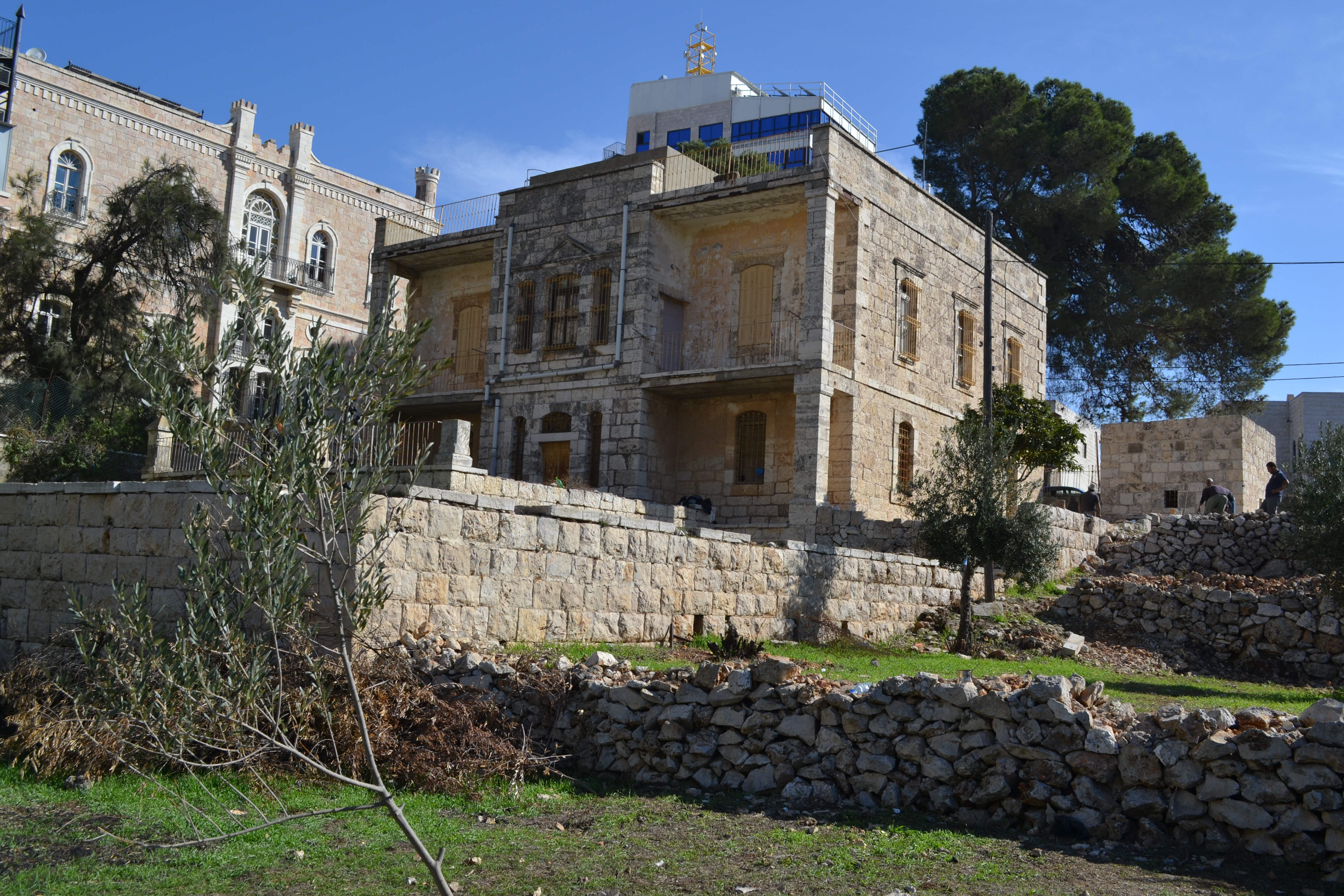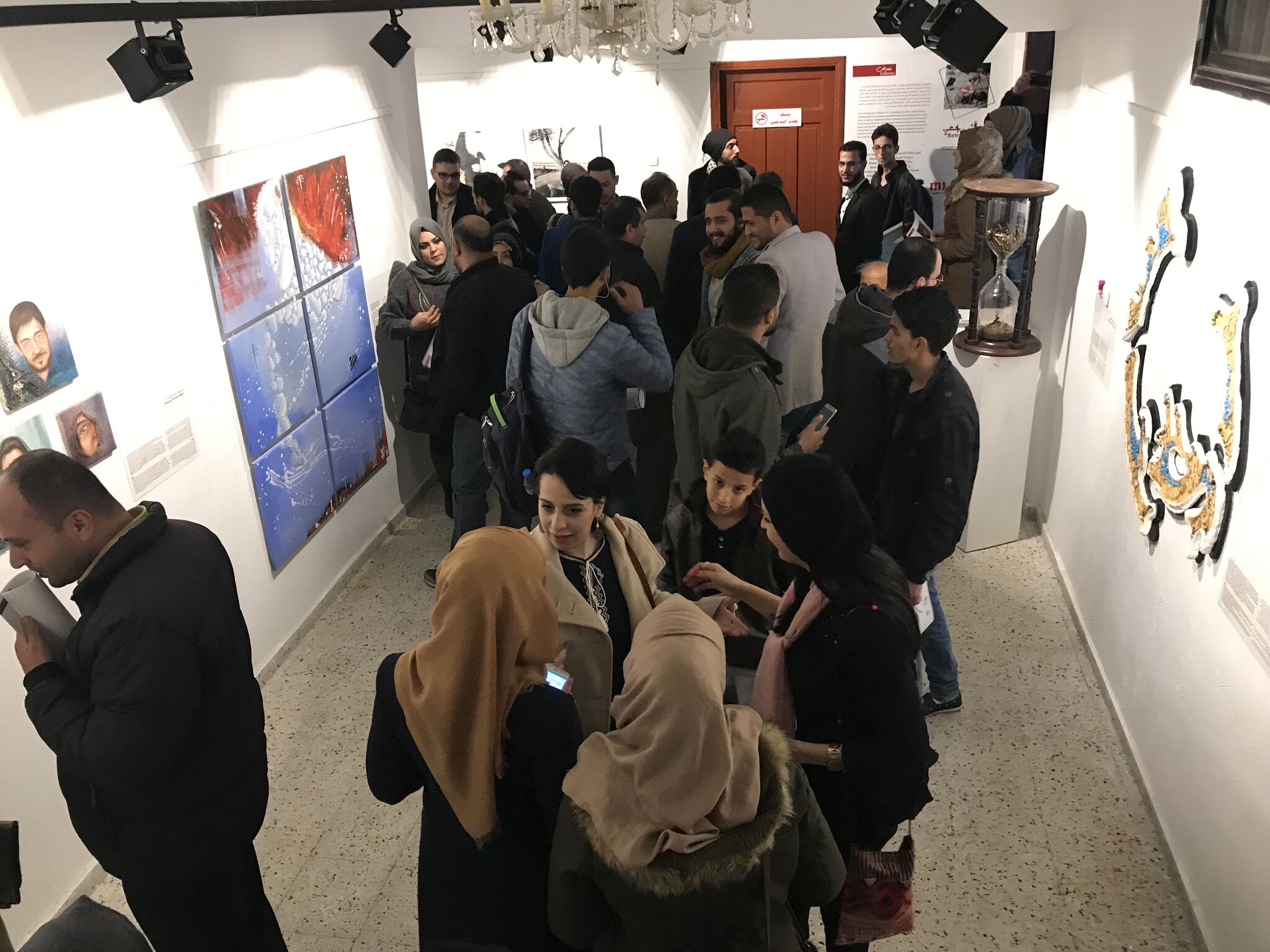

One of the two buildings located in the place of the implementation of the project Sakiya Art/Science/Agriculture initiative
The A. M. Qattan Foundation (AMQF) has recently concluded the first round of funding in the “Visual Arts: A Flourishing Field” (VAFF) project, with the signing of the last four VAFF Grant Implementation Agreements (GIAs) totalling US$888,123.
With funding from the Consulate General of Sweden, represented by the Swedish International Development Cooperation Agency (Sida), the VAFF project is implemented by the AMQF’s Culture and Arts Programme (CAP). VAFF aspires to achieve a more sustainable, vibrant and innovative visual arts field in Palestine.
As Yara Odeh, VAFF Project Manager stated: ‘Through this round of funding, eight institutions have received grants totalling US$1,590,500. A call for applications in the second round is expected to be announced in early 2019.”
New art spaces in Bethlehem and Ein Qiniya
AMQF has signed a GIA of US$255,691 with the Institute for Palestine Studies (IPS) to support the Dar Jacir art collective in establishing Dar Yusuf Nasri Jacir for Art and Research in Bethlehem. The collective has turned the 127-year-old Jacir family home into a public space for art production, learning and research. Artist and collective member Emily Jacir comments that: ‘Dar Jacir is a local, grass-roots and artist-run community initiative, and the VAFF grant has focused on and protected precisely that by supporting our mission and plans.” She added: ‘One of the most precious elements of this grant has been the very intensive process over the last 6 months of working very closely with the AMQF team, a process through which we have articulated our initiative into a working plan. We are excited to be finally finishing up the community-funded renovation of the family home and to begin programming this spring.”
In collaboration with the IPS, Dar Jacir will host a residency programme and a series of art exhibitions. It will also house part of the Jacir family’s archive collection. In this context, Munir Fakhr El Deen, IPS senior researcher and archives’ advisor, stated: 'The Dar Jacir archives encompass valuable documents on Bethlehem and Palestine from the end of the Ottoman era and during the British Mandate. The Jacir family’s activities in trade reveal how Palestine was connected to a global trade network spanning across Europe and Latin America, casting new light on the history of Palestine and the Levant.”
In a similar vein, the VAFF project has also provided a grant of US$250,029 towards the establishment of the Sakiya Art/Science/Agriculture initiative in the village of Ein Qiniya. Sakiya is a community initiative co-founded by architect and curator Sahar Qawasmi and the artist and filmmaker Nida Sinnokrot. Through this grant, Sakiya will be inaugurated as a new art space that will integrate the visual arts, farming, archiving and the production of knowledge. A residency programme will also be created - the first of its kind in Palestine.
The project is situated on a 16,000m2 plot of land in Ein Qiniya. The grant will contribute to renovating one of two buildings on the project site, both of which date back to 1917.
Opportunities for visual artists
In support of the “Contemporary Linkages” project, AMQF has signed a GIA of US$211,674 with the General Union of Cultural Centres in Gaza. The artists’ collective Shababek for Contemporary Art will supervise artistic implementation of this project, the importance of which lies in its response to the needs of Gaza-based artists. Through specialist supervision, the project will organise a series of training courses, starting with conceptualisation, development, research and experimentation and leading to a coherent art proposal. A follow-up training course will cover art practices, such as sculpture and printing, that will be implemented in collaboration with Arab and foreign artists. Through an Open Call process, the project also offers residency opportunities and production grants to artists from across the Gaza Strip.
Fadi Abu Shammalah, the “Contemporary Linkages” project manager, and Shareef Sarhan, an artist member of Shababek, said: 'In Gaza, young artists suffer from the lack of donor organisations that might provide funding and offer opportunities to artists, due to the overall financial crisis which affects the Gazan community as a whole. The high price of art equipment and materials, for example, has drastically impacted on young artists who have a low income.”
AMQF also signed a GIA of US$171,153 with the Al Ma’mal Foundation for Contemporary Art in Jerusalem in support of its “Supporting and Promoting Art and Culture in Palestine” project, a project which aims to enhance Al Ma’mal’s support to artists in producing art projects, residencies and exhibitions.
In recognising the importance of the VAFF grant, Jack Persekian, Director of the Al Ma’mal Foundation for Contemporary Art, said: 'I believe that the management model of this grant has introduced a paradigmatic shift in the concept of grant management in the visual arts field in Palestine.’ He added: ‘The institutional support for artists provided through VAFF grants will strike a balance between the roles played by artists, who are a key component of the art scene, alongside art educators, researchers, curators, institutions, media and promotional platforms, commercial galleries, etc. Such support prevents certain actors from maintaining control over the art scene and its components.”




